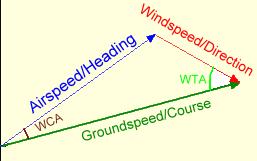Again, my stumbling block...
At SL, a 15k crosswind will move a plane 15nm downwind in an hour unless corrected for.
At 10,000', a 15k crosswind will move a plane 15nm downwind in an hour unless corrected for.
What then gives one more "force" than the other?
"In physics, a force is any interaction which tends to change the motion of an object. In other words, a force can cause an object with mass to change its velocity (which includes to begin moving from a state of rest), i.e., to accelerate. Force can also be described by intuitive concepts such as a push or a pull." - from Wikipedia


